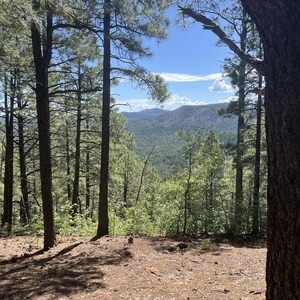Diamond Peak is located in east-central Idaho's remote Lemhi Range and is one of the state's most spectacular peaks. At 12,197 feet, it is the fourth highest mountain in the state, and with 5,377 feet of prominence, it qualifies as one of Idaho's three ultra-prominent peaks. It is one of only nine 12,000-foot peaks in Idaho, and it is often climbed by those seeking to complete this list. The mountain is also the highpoint of Butte County and the Lemhi Range. Diamond Peak towers above every other peak in the range and is over 400 feet higher than then next highest peak, 11,612-foot Bell Mountain. As a result, the mountain sticks out and is highly visible from many areas of the state. On a clear day it can be seen from Idaho Falls almost 75 miles away.
Even for those not trying to complete the Idaho 12er's, Diamond Peak is a must-do for anyone interested in climbing Idaho's mountains. All routes on the mountain are at least Class 3 YDS and involve steep scrambling and exposure. During the summer a climb will usually take half to a full day depending on how quickly you move. During the winter the mountain is a major expedition requiring alpine skills and equipment. When snow covers any portion of the route it is recommended that an ice axe and crampons be brought along.
There are two main routes up the mountain. The shorter and most popular route follows the spectacular East Ridge. The route climbs up steeply from the Birch Creek Valley directly to the summit and offers sustained Class 3 scrambling, amazing views, and a good amount of exposure. This route is often called one of the classic climbs of Idaho and is one that people keep coming back to. Diamond can also be climbed from the west via Badger Creek. This route is far more remote and taxing because it involves a four-wheel drive approach, bushwhacking, more milage, route-finding problems, and seemingly endless steep slopes of loose scree in addition to Class 3 scrambling near the summit. Even though this route is more difficult in many ways, it is still a very interesting and rewarding climb. Badger Creek saw a lot of mining activity in the late 1800s, and many cabins and mine shafts remain to this day. Additionally, Badger Creek is a perennial stream, so water is available all year long. Anyone who takes this route is virtually guaranteed absolute solitude, but be warned that the scree on the upper slopes of Diamond Peak will make you earn every single step. Note that most of the photos featured on this page are from the western route.









Comments
Sign In and share them.